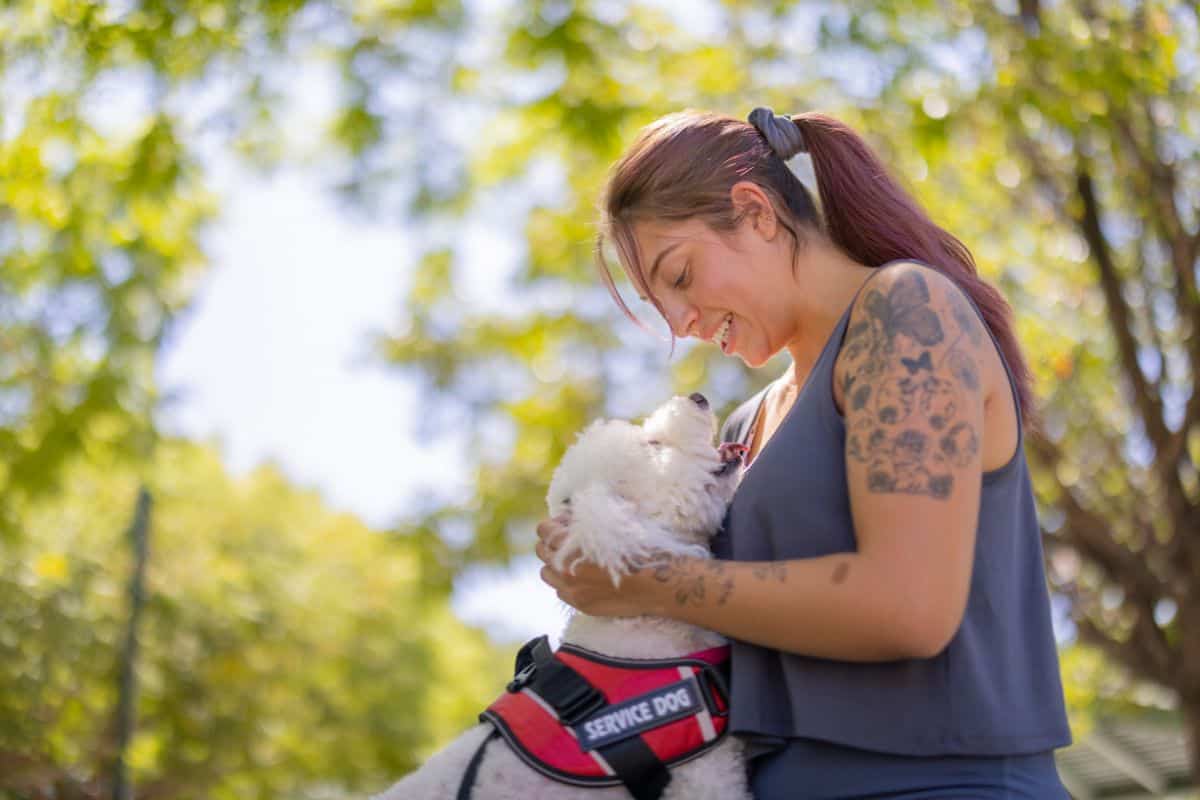Your Step-by-Step Guide: How to Get a Service Dog

Wondering how to get a service dog? This comprehensive guide walks you through each step, from evaluation to certification, to enhance your life in meaningful ways. You can also check out our comprehensive guide on service dog training.
Step 1: Assessing Your Needs
First and foremost, you'll want to evaluate your specific needs for a service dog. These amazing animals can aid individuals with a variety of conditions, both physical and psychological. These conditions can include:
- Mobility issues
- Sensory impairments
- Mental health disorders like PTSD
- Diabetes and other medical conditions
Consult with healthcare providers, such as your primary care physician or mental health specialist, to determine if a service dog could significantly improve your quality of life.
Step 2: Legal Definitions and Protections
Before taking the leap into the realm of service dogs, you should get acquainted with the legal framework around them. According to the Americans with Disabilities Act (ADA), a service dog must be trained to perform specific tasks to assist someone with a disability. Examples of tasks include guiding the visually impaired, alerting deaf individuals to noises, and pulling a wheelchair.
Remember, emotional support animals (ESAs) and therapy dogs don’t have the same legal protections or access rights as service dogs.
Step 3: Financial Considerations
Securing a service dog can be a financial commitment. Here's a breakdown of some potential costs:
- Initial purchase or adoption of the dog
- Service dog training
- Veterinary care
- Food and supplies
However, don't let financial constraints deter you. Numerous organizations offer grants, scholarships, and financial aid programs to help prospective service dog owners. Research and apply for these to ease the financial burden.
Step 4: Choosing the Right Type of Service Dog
When it comes to choosing your future companion, you'll want to consider several factors:
- Temperament: Look for a dog that is calm, obedient, and social.
- Size: Make sure the dog’s size is suitable for your living conditions and is capable of performing the required tasks.
- Breed: Labs, Golden Retrievers, and German Shepherds are commonly used in service dog training but other breeds can be equally effective.
Discuss these factors with your service dog trainer to find a dog that best meets your needs.
Step 5: Finding a Reputable Organization or Trainer
Choosing the right organization or trainer is crucial. Always look for professionals with proper education and experience (like Specialized Dog Trainers graduates from The Academy of Pet Careers) to ensure that they adhere to high training standards. Check for testimonials, track records, and if possible, try to visit the training facility in person.
For those interested in this as a career, organizations like The Academy of Pet Careers offer comprehensive dog training courses to help you become a service dog trainer.
Step 6: Training Your Service Dog
Your service dog will undergo extensive specialized training that typically spans several months. The process includes:
- Basic obedience training: Sit, stay, come, etc.
- Task-specific training: Pulling wheelchairs, alerting to sounds, etc.
- Public access training: Socializing the dog to behave in public settings
After successful training, you have the choice to pursue a certification. This is not a requirement but offers proof of your dog’s status and your need for a service dog.
Step 7: Bringing Your Service Dog Home
Once the training and certification are complete, it's time to bring your new companion home. But before you do, make sure to:
- Prepare Your Home: Remove hazards, create a dog-friendly space, and have supplies ready.
- Introduce the Dog: To family members, other pets, and the spaces where they’ll spend time.
- Have a Transition Plan: Work with the trainer to make the initial weeks smooth and comfortable for your new service dog.
Step 8: Tips for Public Interaction and Travel
Navigating the public sphere with your service dog can initially be challenging. Here are some tips:
- Documentation: Carrying documentation or wearing a service dog vest will help ease the minds of the public whether your dog is a legitimate service dog. These are not requirements but can greatly help if someone doubts your need for a service animal.
- Public Interaction: Educate people if they are unaware of ADA guidelines or your rights.
- Travel Preparations: Many airlines have specific policies for service dogs, so always check in advance.
Having a service dog by your side requires you to also be an ambassador of sorts, educating the public and upholding the standards that protect your rights.
Acquiring a service dog involves numerous steps, from your initial needs assessment to rigorous training and eventual certification. These incredible animals can provide immeasurable improvements to your quality of life, making each step of this demanding process entirely worthwhile.
Frequently Asked Questions
Not every dog is cut out for this specialized role. Factors like temperament, size, and age can determine a dog's suitability for service dog training.
The training process varies but usually takes several months. This includes both general obedience and specialized task training. Training is the most extensive part of getting a service dog. After that, certifying is a matter of submitting paperwork and getting your certificate in the mail.
Service dogs are trained to assist individuals with disabilities. Therapy dogs provide emotional support but don't have the same legal protections or access rights.
Yes, it's possible but not guaranteed. Your pet will need to pass various temperament and skills tests, and then undergo specialized training. Organizations like The Academy of Pet Careers can help guide you through this process.
To become a service dog trainer, you'll want both certification and hands-on experience. Comprehensive courses are available at institutions like The Academy of Pet Careers.
 Author - Joseph Schifano
Author - Joseph Schifano
Joseph Schifano is the owner and President of The Academy of Pet Careers. With over 20 years of experience working in the pet field, managing large scale pet care businesses, he has experience in every facet of the industry. Joseph's focus is primarily on the business of pet care but his passion is in understanding animal behavior how a dog's brain works so we can improve the care we provide as pet professionals. He is a huge advocate for Pet Empowerment and Force Free training methods. Read more in Joseph's full bio.
